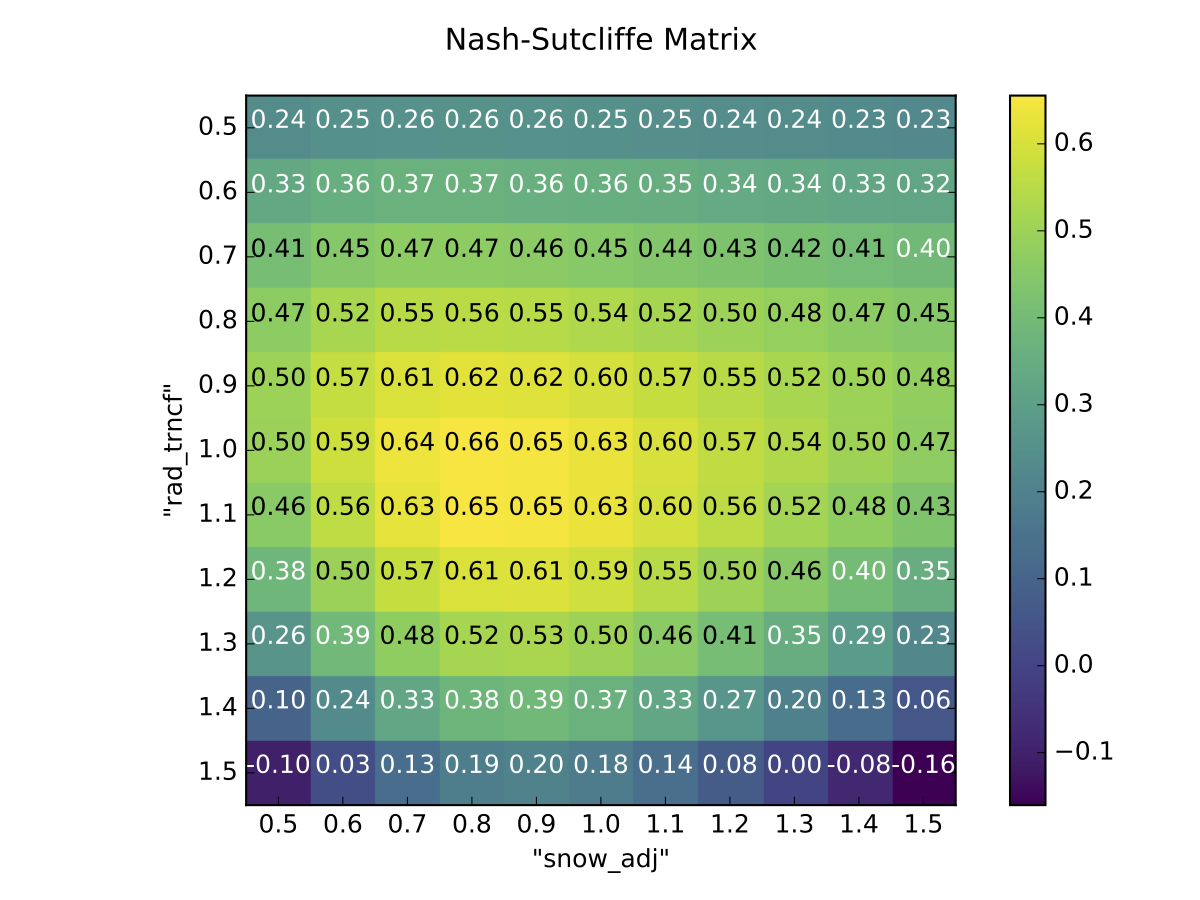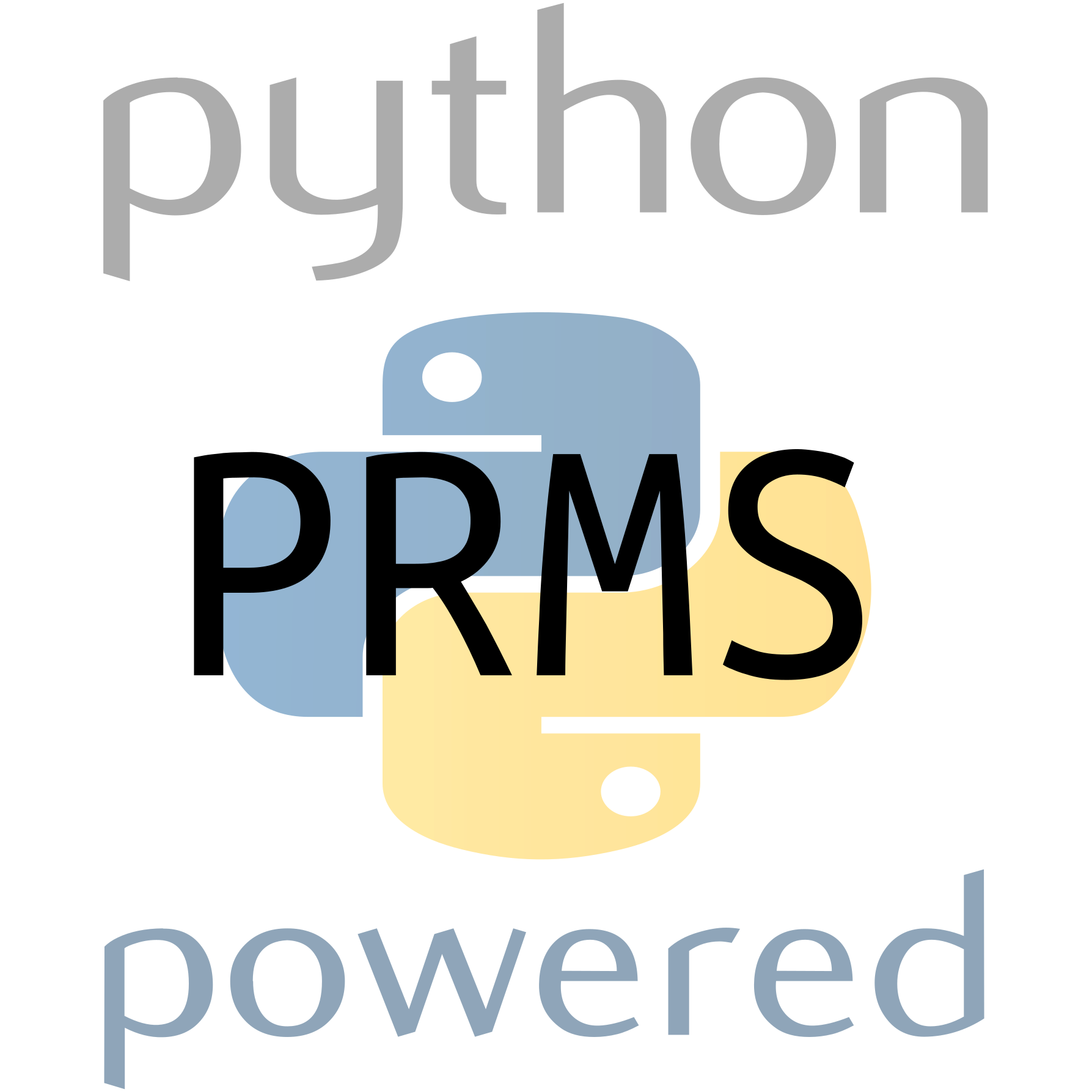Command-Line Interface¶
If you installed using pip, you should now be able to access the
PRMS-Python Command-Line Interface (CLI) through the prmspy command.
The prmspy CLI is an ongoing work in progress. You can run the prmspy
command
prmspy
and you should see the following help message
Usage: prmspy [OPTIONS] COMMAND [ARGS]...
access PRMS-Python functionality from the command line
Options:
--help Show this message and exit.
Commands:
nash_sutcliffe_matrix Save a PDF of the Nash-Sutcliffe created from...
param_scale_sim Provide params and scaling values; run PRMS...
You can get help messages for the commands by typing them in after prmspy:
prmspy param_scale_sim
prmspy nash_sutcliffe_matrix
Commands¶
The CLI provides two commands, param_scale_sim and
nash_sutcliffe_matrix. They are rather cryptically named, so we will explain
these names.
param_scale_sim¶
param_scale_sim performs a parameter-scaling experiment. The user can
pass in any number of parameters and a list of scaling values to use for
each parameter. prmspy will modify base parameter data as requested,
doing the data management for you, and placing all “scenario” inputs into
a UUID4-named directory. prmspy tracks which directories belong to which
combination of scaling values, and writes this information on disk in
JSON-formatted metadata saved to the same parent directory as the scenario
input and output data.
Below is an example using prmspy param_scale_sim to create 121 different
scenarios by co-varying two parameters, rad_trncf and snow_adj both
across eleven values, 0.5 to 1.5 in 0.1 increments. We provide a title,
“Testing prmspy with rad_trncf and snow_adj adjustments”, use eight
processors (-n8), run PRMS instead of simply building scenario input data,
and write all data to the directory test-run-series.
prmspy param_scale_sim prms_python/models/lbcd \
-p rad_trncf \
-s"[0.5, 0.6, 0.7, 0.8, 0.9, 1.0, 1.1, 1.2, 1.3, 1.4, 1.5]" \
-p snow_adj \
-s"[0.5, 0.6, 0.7, 0.8, 0.9, 1.0, 1.1, 1.2, 1.3, 1.4, 1.5]" \
-t"Testing prmspy with rad_trncf and snow_adj adjustments" \
-n8 \
-o test-run-series \
--run-prms
It’s a lot to type in, but it’s actually pretty clear.
What to do with all that data? Move on to the next section to see an option for analyzing the fit of modeled data to observed data as these parameters vary.
nash_sutcliffe_matrix¶
The Nash-Sutcliffe model efficiency is one of many measures of how well a model output matches known observational data. For this, we are comparing the predicted streamflow matches the observed streamflow.
Mathematically, the Nash-Sutcliffe efficiency (NSE), \(E\) is defined as
where for us \(Q_o^t\) is the observed streamflow at time \(t\), \(Q_m^t\) is the modeled streamflow at time \(t\), and \(\overline{Q_o}\) the time average of the observed streamflow.
The Nash-Sutcliffe efficiency can be at most 1 which happens in the unlikely case that the modeled streamflow exactly matches the observed streamflow. The NSE has no lower bound. An NSE of zero means that the time-average would do just as well at predicting the timeseries as the model did. An NSE below zero means that the time-average as a predictor would be a better predictor than the model.
We can calculate a matrix of Nash-Sutcliffe values whose coordinates correspond
to combinations of parameter scalings given to prmspy param_scale_sim
above.
To build a PDF with a visualization of this image, run the following
prmspy nash_sutcliffe_matrix test-run-series nash-sutcliffe.pdf
Open nash-sutcliffe.pdf and you should see something just like this:


